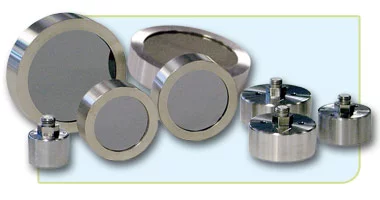α-spectrometry is used for qualitative and quantitative measurements of α-emitting radionuclides. It is also used to measure the energy degradation of α-particles passing through a layer and, in combination with the advanced α-spectroscopy simulation program (AASI) [1, 2] to calculate the target thickness and its fluctuation.
Different α-spectrometry assemblies are available in our laboratories. Typically these are silicon PIPS detectors with different open sensor surface, characterized by a typical silicon substrate of 150 µm, a 50 nm SiO2 dead layer.
References
[1] T. Siiskonen, R. Pöllänen, Advanced simulation code for α spectrometry, Nucl. Instrum. Methods Phys. Res., Sect. A, 550 (2005) 425.
[2] T. Siiskonen, R. Pöllänen, α–electron and α–photon coincidences in high-resolution α spectrometry, Nucl. Instrum. Methods Phys. Res., Sect. A, 558 (2006) 437.

